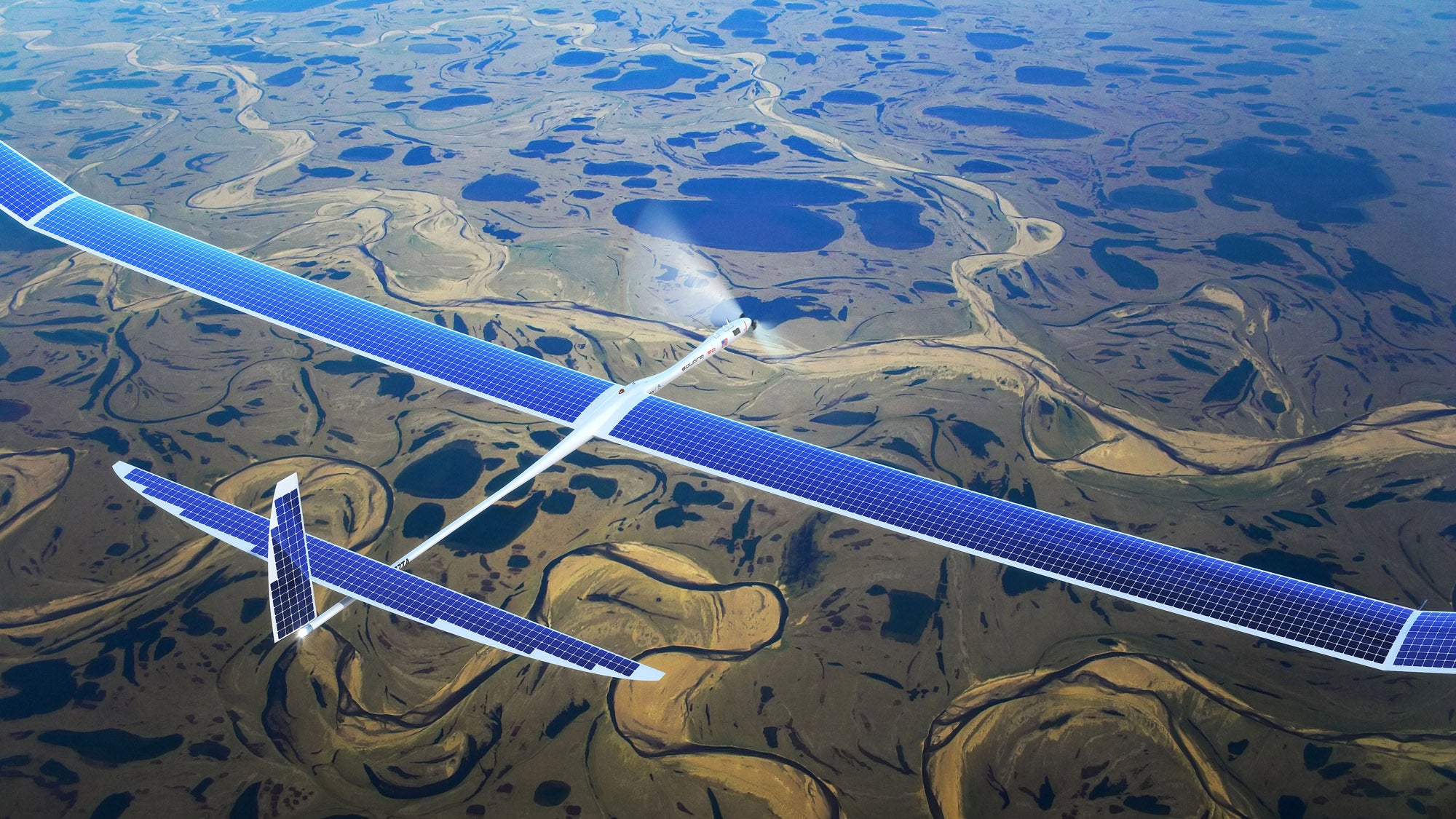Game of drones: Why Google and Facebook are going head-to-head for control of the skies
Google has bought Titan Aerospace, a drone manufacturer previously courted by Facebook - what are the internet giants planning for this technology?

At twelves miles up the atmosphere things seem pretty quiet. Commercial flights are safely stowed six miles below along with the threat of any turbulence or convection; temperatures are stable, the sun is shining and everything is pretty much still.
Yet it's in this quiet portion of the stratosphere that the next battle two giant internet companies will be taking place, as both Google and Facebook invest in building high-altitude drones, capable of unmanned flight for years at a time.
There won't be any dogfights of course, but the commercial skirmishes have already begun, with Google announcing that they have acquired Titan Aerospace – a respected drone manufacturer that Facebook had previously been making overtures towards.
Google reportedly offered to beat any offer made by the social network, but Mark Zuckeberg’s team seems far from disconsolate: the social network announced this March that it had bought up a clutch of aerospace talent from Nasa as well as swallowing whole tiny Somerset-based firm Ascenta in order to power its own drone dreams.
Like Titan Aerospace, Ascenta are specialists in ‘high altitude long endurance vehicles’: a new breed of lightweight aircraft that can be sent 60,000 feet into the atmosphere, high above the clouds and storms that commercial flights have to contend with.
Both Facebook and Google have said that they’re interested in using these craft to supply internet access to remote areas of the world, and although there’s a straightforward commercial interest for both companies (more internet means more customers after all), quite how ground-breaking and useful the technology they're investing in is not yet fully understood.

Because they’re unmanned and remotely controlled, these aircraft are often thought of as drones, but really it makes more sense to think of them semi-permanent, atmospheric satellites. Unlike drones they’re not capable of nimble flight, of darting back and forth over a target; instead they’re more akin to massive, delicate gliders, taking off from regular airfields but then pretty much left to their own devices.
Although Titan Aerospace previously said it was not expecting to begin any commercial operations until 2015, it’s their aircraft that we’ve heard most about (far less is known about Ascenta), with their solar-powered Solara 50 and Solara 60 boasting wingspans greater than a Boeing 767 with solar-panels on the top of the craft keeping them aloft for five years at a time.
This gives them a mission range of more than 2.8 million miles and a field of view of more than 25,000 square miles. If you mounted a powerful enough base station on a Solara you could provide mobile coverage equal to that of hundreds of ground-based towers. Titan Aerospace previously said that they'd be able to deliver internet speeds of 1 gigabit per second - many times faster than average speeds in the US and UK.
However, mobile data isn’t the only thing that Facebook and Google’s new aircraft could provide. Like orbital satellites they can be rigged up with cameras and sensors to keep tabs on the Earth itself, with Google mentioning that the technology could be used to “monitor environmental damage like oil spills and deforestation”.
Although these claims might be little more than lip-service at the present time, projects like these would do a lot to deflect nascent criticism of companies' aerospace ambitions.

Facebook has previously been accused of disguising commercial interests as philanthropy after it launched its Internet.org initiative to lower the cost of internet access, and when Google announced Project Loon last year (a trial scheme to deliver the web via weather balloon) Bill Gates famously took the company to task over its priorities, saying "when you’re dying of malaria, I suppose you’ll look up and see that balloon, and I’m not sure how it’ll help you.”
Although it seems unavoidable that both Google and Facebook will invest in technology that furthers their commercial ambitions, this doesn't mean that the technology won't be incredibly useful in the future. If one - or both - companies ends up with a fleet of drones delivering internet across the world, the need for public approval will mean that they're likely to use a portion of this power for scientific and humanitarian ends.
The technology is perhaps comparable with something like Google Street View: it's a wildly ambitious venture that has unsettling implications for privacy, but it also has the power to delight us - as well as provide a genuinely useful tool for businesses and consumers. Make no mistake: a cheaper alternative to orbital satellites would be a global good, even if the technology is being developed with the somewhat grubby goal of getting more punters on Facebook.
Join our commenting forum
Join thought-provoking conversations, follow other Independent readers and see their replies
Comments